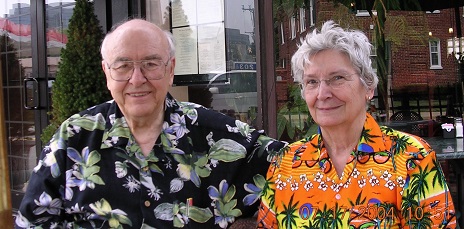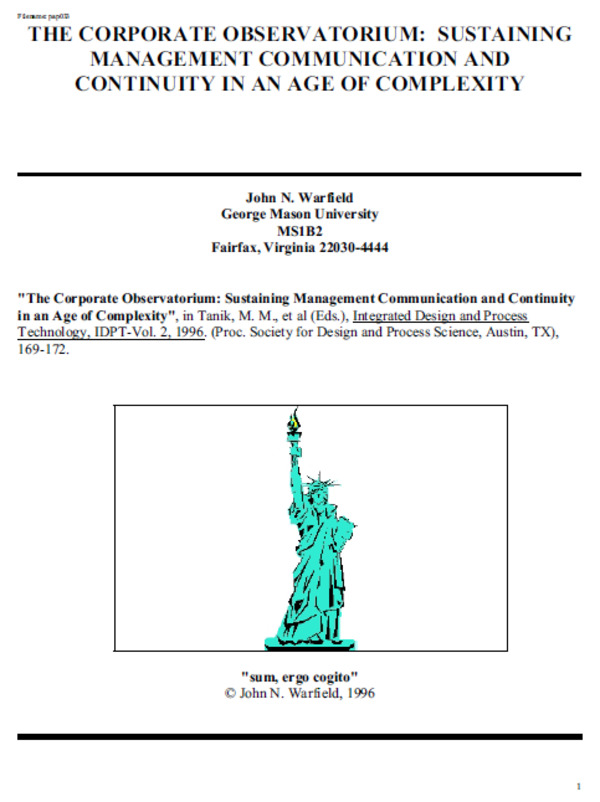Warfield uses Harold Lasswell's proposal of an "urban planetarium" and expands it to suggest that the public can learn any sort of complex idea if it is properly illustrated visually, and that Interactive Management's structural models are the best tool for such illustrations. He wants buildings similar to modern art galleries, with wall displays of ideas rather than pictures. Abstract excerpt: "Seven critical forms of representation of complexity will be described briefly. Their significance in sustaining communication and organizational continuity via the corporate observation will be indicated. Potential application in higher education will also be briefly described." LIST OF TRANSPARENCIES USED IN THE TALK: The Corporate Observatorium (Title page); Is it Possible; Can People Learn in Depth?; The Alberts Pattern; Systems Education Version of the Alberts Pattern; Data from Henry Alberts work on Redesigning…; Our Traditional Patterns/The Lasswell Triad; The Situation Room; The Prelegislature; The Observatorium; Graphical Communication; Seven Ways to Portray Complexity.


